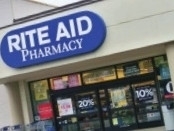Pharmacy in the USA

Pharmacy in the USA
Retail trade in medicines in the USA is a huge market, significantly different from the Russian pharmaceutical market not only in volume, but also in the way drug trade is organized. All pharmacies in America are private, they are owned by pharmacy chains or independent pharmacists, and all of these pharmacies have their own characteristics of operation.
Types of pharmacies in the USA
There are currently several types of pharmacies in the United States, the main ones being retail pharmacies, hospital pharmacies, and compounding pharmacies. Recently, online pharmacies have also emerged, and their turnover is also increasing every year. The vast majority of pharmacists in the United States (more than 65%) work in retail pharmacies—mostly as employees, but sometimes as owners of pharmacies, usually small ones. About 22% of pharmacists work in hospital pharmacies, and the remaining pharmacists work in mail order companies, online pharmacies, pharmaceutical wholesalers and government agencies related to pharmaceuticals. The work of pharmacies engaged in the retail sale of prescription and over-the-counter drugs is significantly different from the work of Russian pharmacies, so let's look at this aspect in more detail.
The American approach to pharmaceutical sales
Despite the fact that drugstores are the main channel for retail drug sales in the United States, only 65% of prescription drugs and only about 45% of over-the-counter drugs are sold through them. Other medications are sold in supermarkets, grocery stores, and even sent by mail upon orders. At the same time, pharmacies, in addition to prescription and over-the-counter drugs, sell expensive cosmetics and perfumes, as well as related products, which may include not only food, but also beer, chips and strong alcohol, and sometimes also cards for payments for goods and services, postcards and even T-shirts.
- Arts
- Business
- Computers
- Giochi
- Health
- Home
- Kids and Teens
- Money
- News
- Recreation
- Reference
- Regional
- Science
- Shopping
- Society
- Sports
- Бизнес
- Деньги
- Дом
- Досуг
- Здоровье
- Игры
- Искусство
- Источники информации
- Компьютеры
- Наука
- Новости и СМИ
- Общество
- Покупки
- Спорт
- Страны и регионы
- World


